List of European animals, with pictures and facts. Discover the amazing fauna of Europe, with examples of all major animal groups.
Introduction To Europe & European Animals
Europe is a continent in the Northern Hemisphere that, along with Asia, makes up the landmass known as “Eurasia”.
Europe is home to a wide range of habitats and a correspondingly wide diversity of animals. Important European animal habitats include taiga forest, tundra, broadleaf forest, steppe, the Alps, Pyrenees, and other mountain ranges; the Atlantic and Arctic Oceans, the Mediterranean Sea, and numerous large rivers and lakes.
Examples of European animals include mammals such as the brown bear, Eurasian lynx, grey wolf, red deer and wild boar; reptiles such as the European adder, slow worm and common lizard; amphibians such as the common frog, fire salamander and smooth newt; and birds such as the capercaillie, Eurasian eagle owl and golden eagle.
In the list of animals that live in Europe below, you'll find pictures and facts on these and many other European species. Either click on an individual animal’s name for information on a specific species, or scroll down to browse all of the animals.
European Animals
- Alpine Ibex
- Alpine Marmot
- Atlantic Bluefin Tuna
- Brown Bear
- Brown Trout
- Capercaillie
- Chamois
- Common Blackbird
- Common European Adder
- Common Frog
- Common Toad
- Eurasian Beaver
- Eurasian Eagle-Owl
- Eurasian Lynx
- European Badger
- European Bee-Eater
- European Bison
- European Eel
- European Green Lizard
- European Green Woodpecker
- European Stag Beetle
- European Wasp
- Fire Salamander
- Golden Eagle
- Great Diving Beetle
- Grey Wolf
- Old World Swallowtail
- Pine Marten
- Red Deer
- Red Fox
- Red Kite
- Red Squirrel
- Roe Deer
- Slow Worm
- Smooth Newt
- Viviparous Lizard / Common Lizard
- Water Vole
- Wild Boar
Discover Amazing Animals From All Around The World
- African Animals
- Antarctic Animals
- Arctic Animals
- Asian Animals
- Australian Animals
- North American Animals
- South American Animals
Alpine Ibex
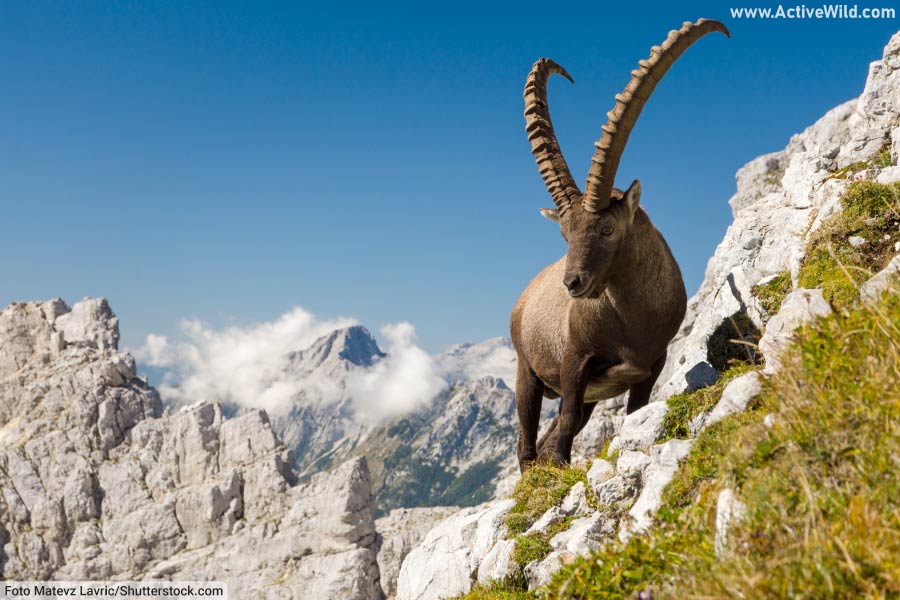
- Type of Animal: Mammal
- Family: Bovidae
- Scientific Name: Capra ibex
- Conservation Status: Least Concern
The Alpine ibex is a species of wild goat that lives in the European Alps. It is one of several ibex species, all of which belong to the genus Capra, a group of mammals which also includes the turs, markhor, and the domestic goat.
The Alpine ibex is a skillful climber, capable of scrambling at high speed over rocky terrain.
Both male and female ibex have curved, ridged horns, but those of the male are far longer. Male Alpine ibexes use their horns for fighting for dominance during the mating season.
After centuries of overhunting, the Alpine ibex almost became extinct in the early 1800’s, when fewer than 100 individuals were left in the wild.
Thanks to numerous conservation efforts, the species’ population today numbers around 53,000 adult individuals.
Discover More With Active Wild
You can see more animals with horns on this page: Animals With Horns
Discover more mountain animals on this page: Mountain Animals
You can find out more about mammals on this page: Mammals – The Ultimate Guide
Alpine Marmot
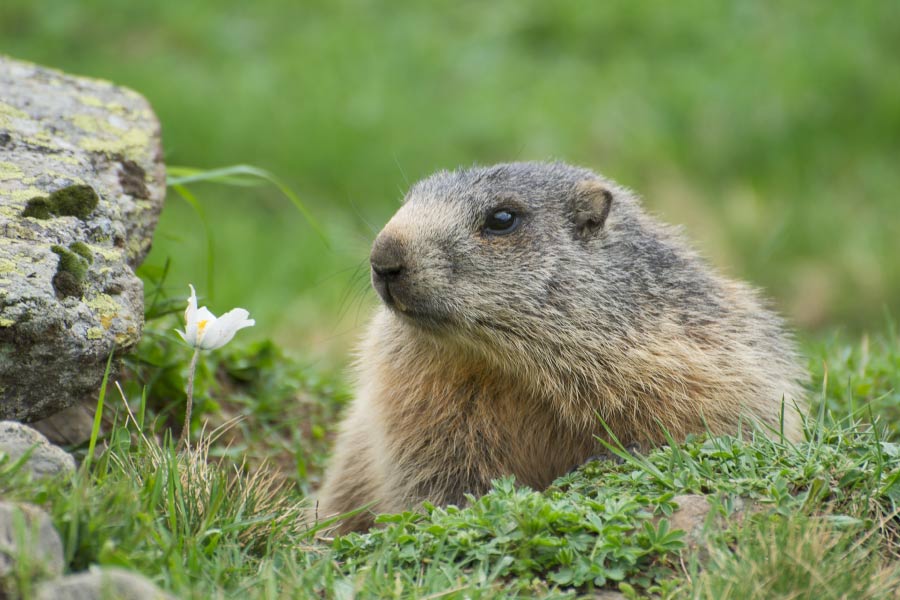
- Type of Animal: Mammal
- Family: Sciuridae
- Scientific Name: Marmota marmota
- Conservation Status: Least Concern
The Alpine marmot is a rodent in the squirrel family Sciuridae. It is found in mountainous areas, and is present in both the European Alps and The Tatra Mountains (a mountain range between Poland and Slovakia). The species has also been introduced to the Pyrenees.
Growing to around 47 to 60 cm in length, the Alpine marmot is one of the largest marmot species. It lives in large family groups in elaborate burrows which may reach depths of up to 10ft. / 3m.
The Alpine marmot makes its own hay by drying grass on rocks in the sun, which it then stores in its burrow. The species hibernates during the winter.
Discover More With Active Wild
Discover more mountain animals on this page: Mountain Animals
You can find out more about rodents on this page: Rodents - The Ultimate Guide
Atlantic Bluefin Tuna
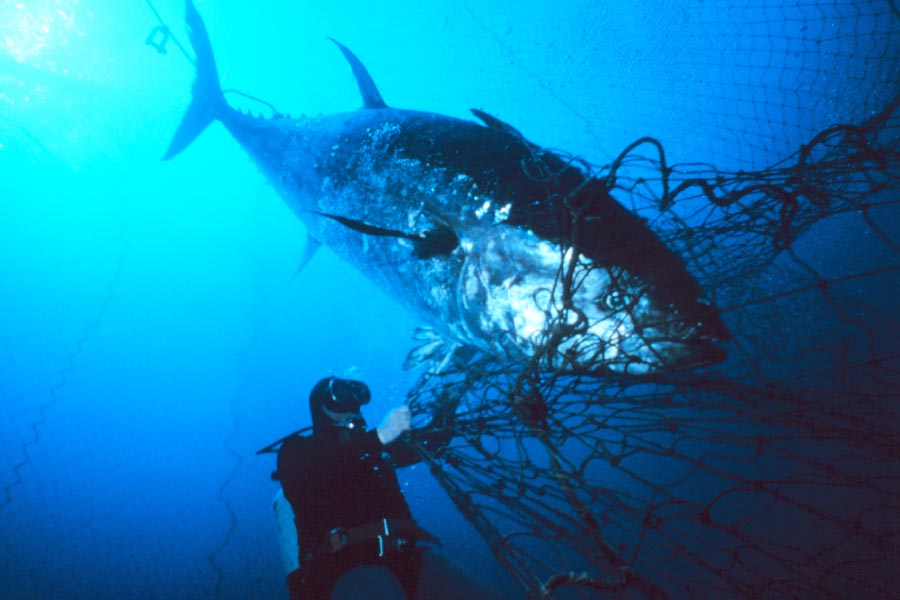
- Type of Animal: Fish
- Family: Scombridae
- Scientific Name: Thunnus thynnus
- Conservation Status: Least Concern
The Atlantic bluefin tuna is a large fish found in the Atlantic Ocean. With an average length of around 2.25 m and typically weighing up to 250 kg (much larger specimens are occasionally caught), it is the largest of the 15 species of tuna.
The Atlantic bluefin tuna preys on squid and schooling fish such as anchovies. With no natural predators of its own, the Atlantic bluefin tuna is an apex predator. It is thought to live up to 50 years.
The Atlantic bluefin tuna is a popular food fish, and the primary threat to the species is overfishing.
Discover More With Active Wild
You can find out more about fish on this page: Fish - The Ultimate Guide
Discover more ocean animals on this page: Ocean Animals
Brown Bear
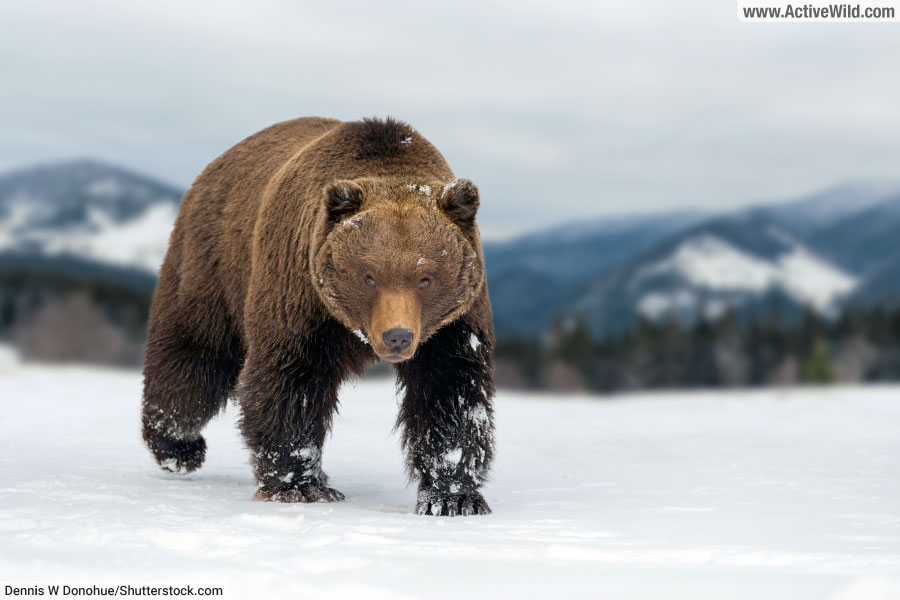
- Type of Animal: Mammal
- Family: Ursidae
- Scientific Name: Ursus arctos
- Conservation Status: Least Concern
The brown bear is, on average, the second-largest species of the eight species of bear; only the polar bear is larger.
Found not only in Europe, but also in North America and Asia, the brown bear has the largest range of any bear.
The subspecies of brown bear found in Europe is known as the Eurasian brown bear (Ursus arctos arctos). Its color ranges from pale, reddish brown to very dark brown (almost black).
Most of Europe’s brown bears are found in Russia, with the species also being present in Scandinavia and Eastern Europe. A small number of brown bears are also found in the Pyrenees.
Discover More With Active Wild
You can see pictures and facts on every species of bear on this page: Types of Bears
Find out more about a North American brown bear subspecies: Grizzly Bear Facts
Brown Trout
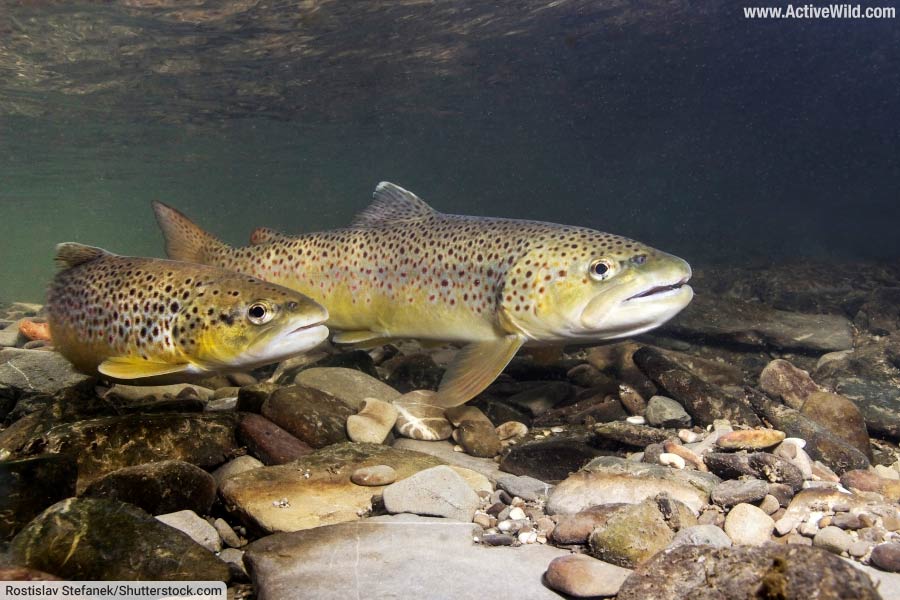
- Type of Animal: Fish
- Family: Salmonidae
- Scientific Name: Salmo trutta
- Conservation Status: Least Concern
The brown trout is found in lakes and rivers throughout Europe, and the species has been introduced in many other parts of the world. As its name suggests, it is typically brown in color, with darker brown and red spots on its back and sides.
Whereas many brown trout remain in freshwater habitats their whole lives, some are migratory. Those that migrate to the sea are known as “sea trout”. Sea trout return to freshwater habitats to breed.
The brown trout is a member of the salmon family, Salmonidae. Like all members of this family, it is slim and streamlined, and has an adipose fin between the dorsal and caudal (tail) fin.
Discover More With Active Wild
You can find out more about fish on this page: Fish - The Ultimate Guide
See different types of fish on this page: Types of Fish
Discover more freshwater animals on this page: Freshwater Animals
Capercaillie

- Type of Animal: Bird
- Family: Phasianidae
- Scientific Name: Tetrao urogallus
- Conservation Status: Least Concern
The capercaillie is the largest member of the pheasant and grouse family, Phasianidae. Other birds in this family include pheasants, partridges, quail, peafowl, turkeys and chickens.
The capercaillie lives in conifer forests in Europe, and is also found in Asia. During the breeding season, groups of male capercaillie (cocks) perform a competitive territorial display, known as a “lek” to impress the watching females (hens).
The male capercaillie weighs up to 7 kg / 15.43 lb., and is up to twice the size of the female; the difference in size between male and female capercaillie is one of the largest of all birds.
The capercaillie is also known as the "western capercaillie" to distinguish it from the closely-related Black-billed capercaillie, which is found in Asia.
You can find out more about the different types of birds on this page: Types of Birds
Discover More With Active Wild
You can find out more about birds on this page: Birds - The Ultimate Guide
Discover more forest animals on this page: Forest Animals
Chamois

- Type of Animal: Mammal
- Family: Bovidae
- Scientific Name: Rupicapra rupicapra
- Conservation Status: Least Concern
The chamois is a member of the subfamily Caprinae, a group of animals known as "goat-antelopes". Other animals belonging to this subfamily include goats and sheep, but not antelopes.
The chamois lives in alpine meadows in the mountains of central and southern Europe. It is also found in parts of Asia.
Female and young chamois live in flocks of between 5 and 30 individuals. The males are solitary.
This small, hooved mammal was traditionally hunted for its skin, which was used to make chamois leather.
Discover More With Active Wild
You can find out more about horned animals on this page: Animals With Horns
Discover more mountain animals on this page: Mountain Animals
Common Blackbird
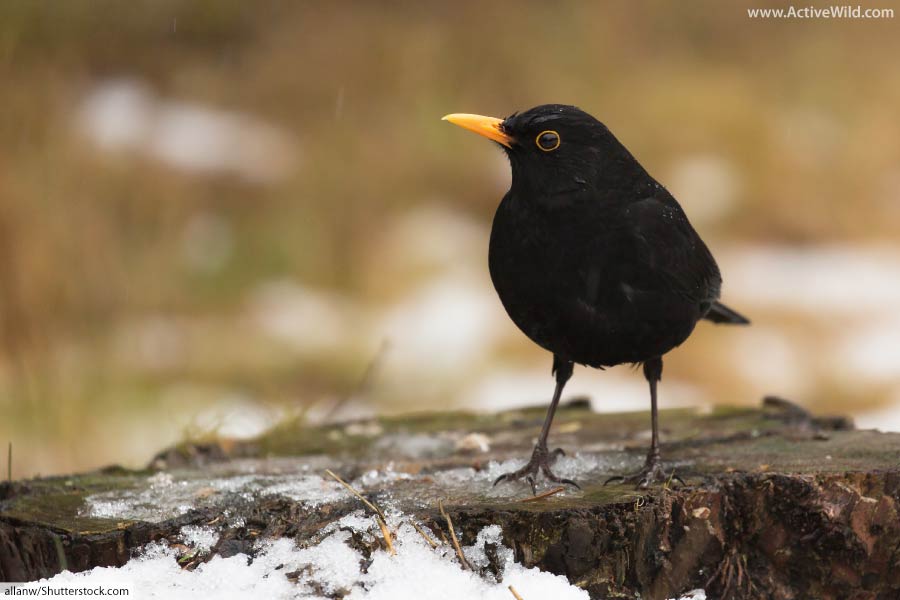
- Type of Animal: Bird
- Family: Turdidae
- Scientific Name: Turdus merula
- Conservation Status: Least Concern
The common blackbird (whose name is usually shortened to simply “blackbird”) is a member of the thrush family found throughout much of Europe. It is a common sight in the continent’s gardens, parks, and woodlands.
True to its name, the male blackbird is black, with a bright, orange-yellow bill and a thin yellow ring around each eye. The female, however, is grey-brown, with a streaked chest and a dull yellow bill.
The blackbird is known for its melodic song, which can be heard in spring and summer, and its frantic alarm call.
Discover More With Active Wild
You can find out more about birds on this page: Birds - The Ultimate Guide
Discover more common British birds on this page: Common British Birds
Common European Adder
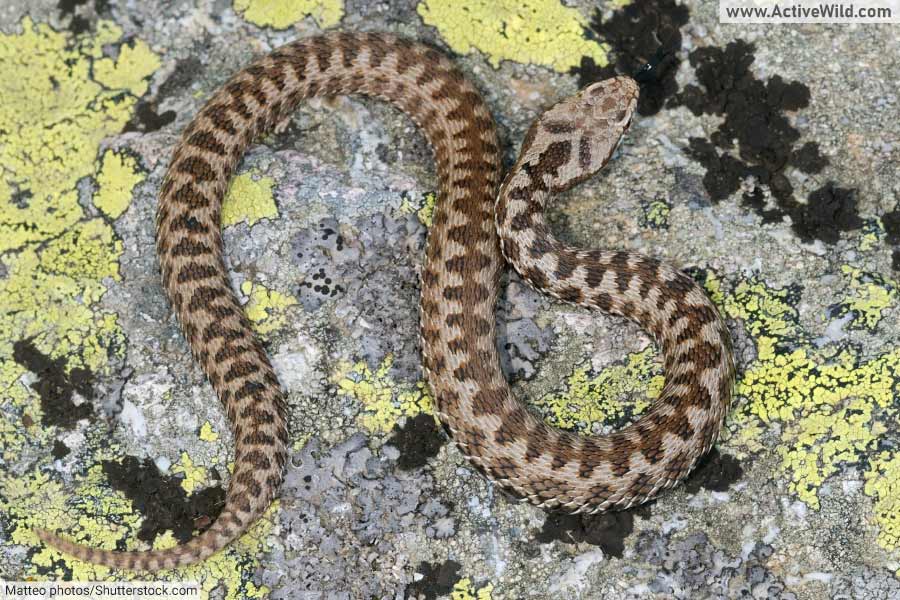
- Type of Animal: Reptile
- Family: Viperidae
- Scientific Name: Vipera berus
- Conservation Status: Least Concern
The common European adder is found from the UK and France eastwards across much of Europe and into Asia. It lives in heaths, moors and woodland edges.
Found further north than any other snake, the common European adder is even present within the Arctic Circle. The species hibernates in the winter, and is most active in spring, when mating occurs.
The common European adder is the only venomous snake found in Britain. Although a bite from an adder can be painful, it is non-lethal to most healthy humans.
The adder is grey / pale brown in color, and easily identified by the zig zag marking running along the length of its back. Some individuals are red-brown or even black in color.
The species can reach lengths of up to 75 cm (30 in.), although most are significantly smaller than this.
Discover More With Active Wild
You can find out more about snakes on this page: Fun Facts On Snakes
Discover more snakes on this page: Types of Snakes
Common Frog
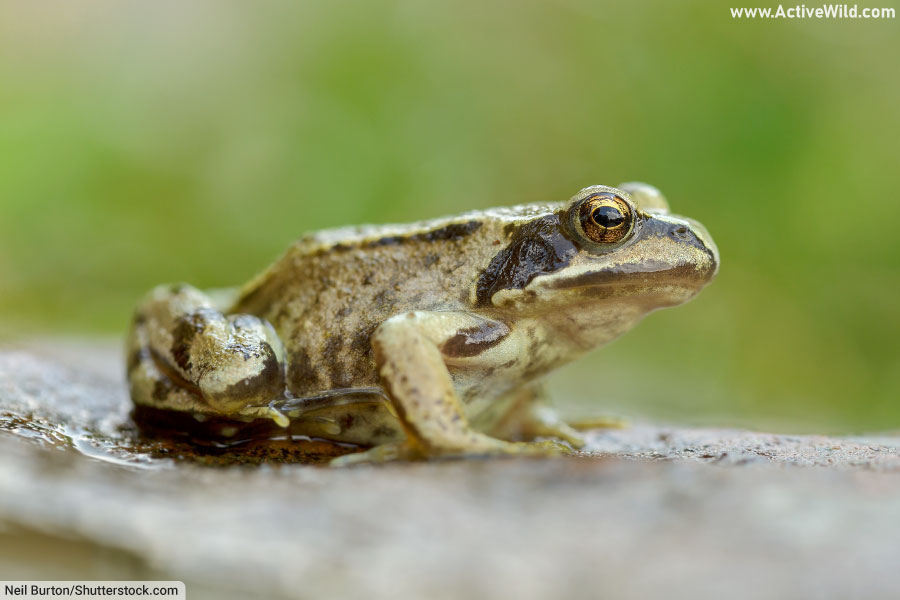
- Type of Animal: Amphibian
- Family: Ranidae
- Scientific Name: Rana temporaria
- Conservation Status: Least Concern
The common frog is found throughout much of Europe. The species is also known as the European frog.
The female common frog is larger than the male, reaching lengths of up to 13cm (5.12 in.). The skin color of both sexes ranges from olive green to dark brown. The back, sides and limbs are patterned with darker spots, blotches and stripes. Behind each eye is a dark patch that extends over the tympanum (eardrum).
The common frog is often seen in or near freshwater ditches, ponds, lakes and streams.
Like most amphibians, the common frog undergoes metamorphosis, changing from an aquatic, larval form into a terrestrial, adult form with lungs and limbs. The larval form of a frog is known as a "tadpole".
Discover More With Active Wild
You can find out more about this species here: Common Frog Facts
You can find out more about amphibians on this page: Amphibians – The Ultimate Guide
Discover more freshwater animals on this page: Freshwater Animals
Discover more European amphibians on this page: European Amphibians List with Pictures & Facts
Common Toad
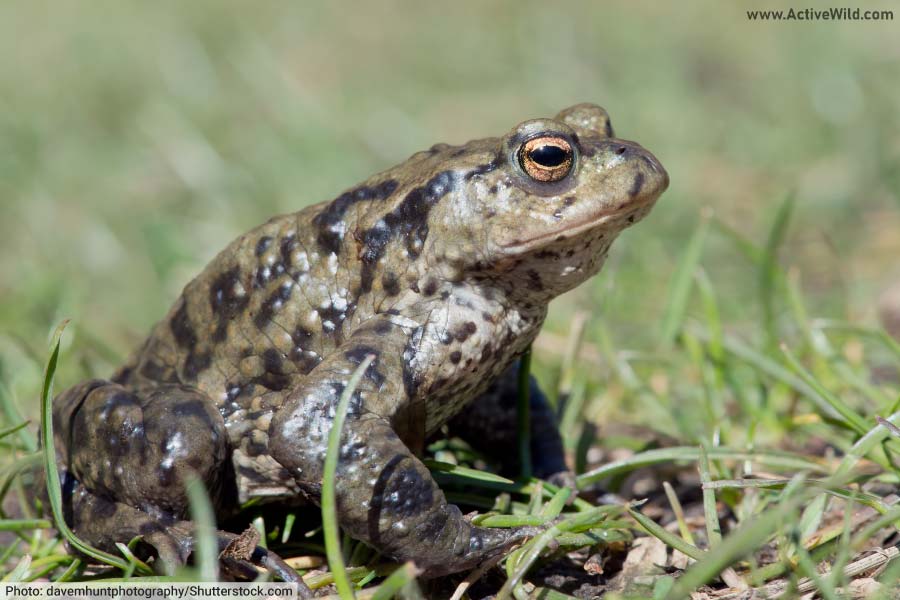
- Type of Animal: Amphibian
- Family: Bufonidae
- Scientific Name: Bufo bufo
- Conservation Status: Least Concern
The common toad is also known as the European toad, or simply “toad” in the UK. It is found throughout much of Europe and into western Asia, and also in parts of North Africa.
During the spring, the common toad can be seen near ponds, ditches and slow-moving streams and rivers. At other times of the year, the species may be found surprisingly far from water.
The common toad is olive-brown in color and its skin has a bumpy, warty texture. Females are slightly larger than the males, reaching lengths of around 13cm (5.12 in.).
The common toad is easily distinguished from the common frog by its warty skin and tendency to walk rather than jump.
Like all toads of family Bufonidae (the “true toad” family), the common toad has parotoid glands located behind its eyes. These produce “bufotoxin”, a poison that is secreted when the toad is threatened.
Discover More With Active Wild
You can find out more about the common toad on this page: Common Toad Facts
Discover more freshwater animals on this page: Freshwater Animals
You can find out more about amphibians on this page: Amphibians – The Ultimate Guide
Discover more European amphibians on this page: European Amphibians List with Pictures & Facts
Eurasian Beaver

- Type of Animal: Mammal
- Family: Castoridae
- Scientific Name: Castor fiber
- Conservation Status: Least Concern
Beavers are large rodents with distinctive, paddle-like tails. There are two species of beaver: the Eurasian beaver, which is found throughout much of Northern Europe, and the North American beaver (Castor canadensis), which lives in the United States and Canada.
The Eurasian beaver is the largest rodent in Europe, and the world’s second-largest rodent, after the capybara. (On average, the Eurasian beaver is slightly larger than the North American beaver.)
The Eurasian beaver constructs dams by felling trees with its sharp teeth. The resulting pond not only provides the beaver with protection from predators, but also creates a wetland ecosystem in which other species can live.
Because of its importance to its ecosystem, the Eurasian beaver is considered to be keystone species.
Discover More With Active Wild
You can find out more about rodents on this page: Rodents – The Ultimate Guide
You can find out more about the North American beaver on this page: North American Beaver Facts
Eurasian Eagle-Owl

- Type of Animal: Bird
- Family: Strigidae
- Scientific Name: Bubo bubo
- Conservation Status: Least Concern
The Eurasian eagle owl is one of the largest species of owl, with large females weighing around 4.6 kg / 10.1 lb. (As with many birds of prey, the female is larger than the male.)
A large Eurasian eagle owl may have a wingspan of up to 1.9m; a similar size to that of a “small” golden eagle.
Found throughout most of Europe, as well as in Central and Eastern Asia, the Eurasian eagle owl has one of the largest ranges of any owl. It inhabits a wide range of habitats, including forests, grasslands, wetlands and mountains.
Like most owls, the Eurasian eagle owl is a nocturnal predator. It is mostly active at dawn and dusk. It hunts a variety of animals, with small mammals making up the bulk of its prey.
Discover More With Active Wild
You can find out more about birds on this page: Birds - The Ultimate Guide
Discover different types of birds on this page: Types of Birds
See more nocturnal animals on this page: Nocturnal Animals
Eurasian Lynx
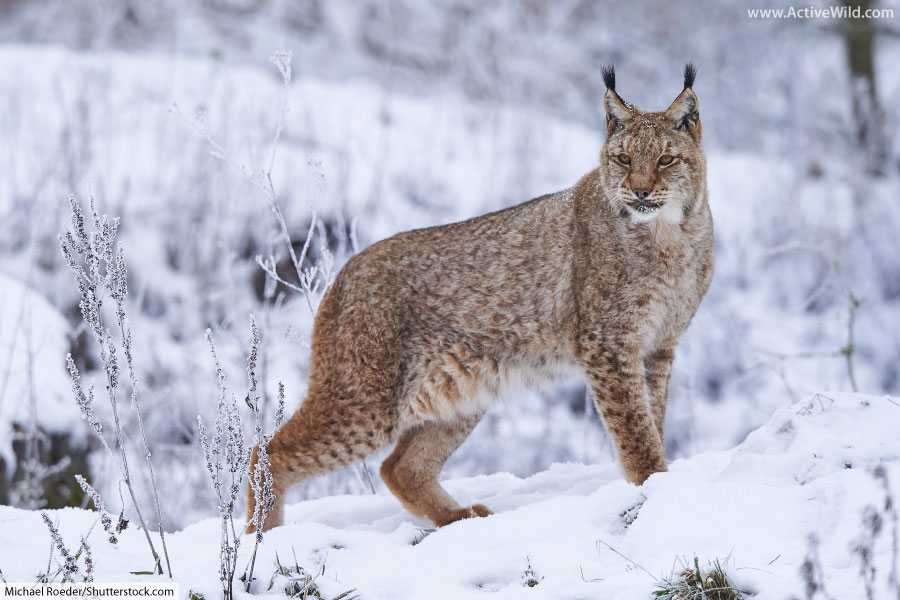
- Type of Animal: Mammal
- Family: Felidae
- Scientific Name: Lynx lynx
- Conservation Status: Least Concern
The Eurasian lynx is the largest of the four lynx species, and one of two found in Europe. (The other European lynx is the endangered Iberian lynx, which is found in Spain and Portugal. The two remaining lynxes are the Canada lynx and the bobcat, both of which are found in North America.)
The Eurasian lynx is found in forests across much of Northern Europe and Northern Asia. Like all lynxes, it has tufted ears, a mane-like ruff of hair on its neck, and a short tail. Its long legs and large, hair-covered paws are adaptations for walking in snow.
Discover More With Active Wild
You can see every type of wild cat on this page: Wild Cat Species With Pictures & Facts
Discover more forest animals on this page: Forest Animals
European Badger
- Type of Animal: Mammal
- Family: Mustelidae
- Scientific Name: Meles meles
- Conservation Status: Least Concern
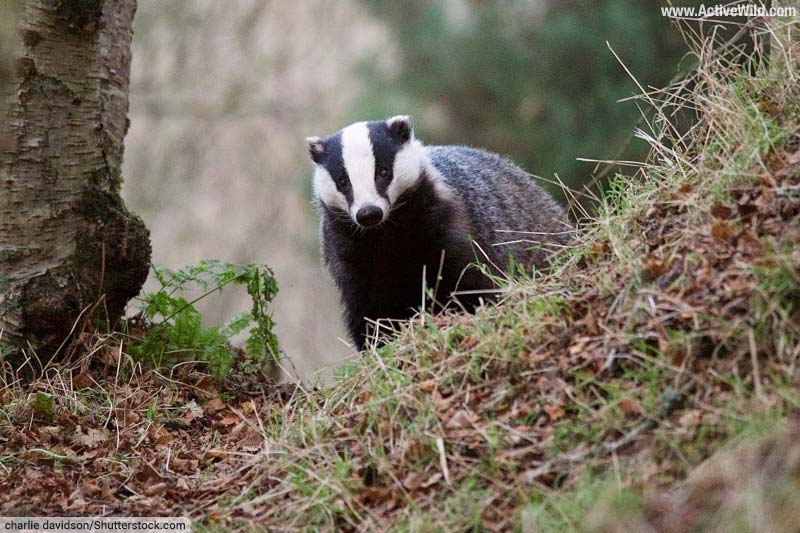
With its black and white face, the European badger is one of the most recognizable European animals. It is found in woodlands throughout the continent, living in groups in dens known as “setts”.
European badgers are nocturnal, emerging from their setts at dusk and foraging for a variety of food, including earthworms, small mammals, insects, fruit and grasses.
Discover More With Active Wild
You can find out more about nocturnal animals on this page: Nocturnal Animals
Discover more black and white animals on this page: Black and White Animals
European Bison

- Type of Animal: Mammal
- Family: Bovidae
- Scientific Name: Bison bonasus
- Conservation Status: Near Threatened
The European bison is Europe’s largest land animal by weight, with large males reaching weights of around 920 kg / 2,028 lb. It is slightly smaller than its North American cousin, the American bison.
Both species of bison are also known as “buffalo”, although they are not “true” buffaloes such as those found in Africa and Asia.
After centuries of hunting, the European bison finally became extinct in the wild early in the 20th Century. A series of reintroductions, in which captive animals were released into the wild, started in the mid-twentieth century, and today herds of European bison can once again be seen in several European countries.
Discover More With Active Wild
You can find out more about the American bison on this page: American Bison Facts
European Bee-Eater

- Type of Animal: Bird
- Family: Meropidae
- Scientific Name: Merops apiaster
- Conservation Status: Least Concern
The European bee-eater is one of thirty species in the bee-eater family, Meropidae. Like all bee-eaters, it is a small, brightly-colored bird with a long, narrow bill for catching its insect prey.
The main prey of the bee-eater is the honey bee, but a variety of other insects are eaten by the bird.
The European bee-eater is found mainly in Southern Europe, inhabiting open or mostly open habitats. It lives colonially in shared burrows in sand banks and river banks.
Discover More With Active Wild
You can find out more about birds on this page: Birds - The Ultimate Guide
European Eel
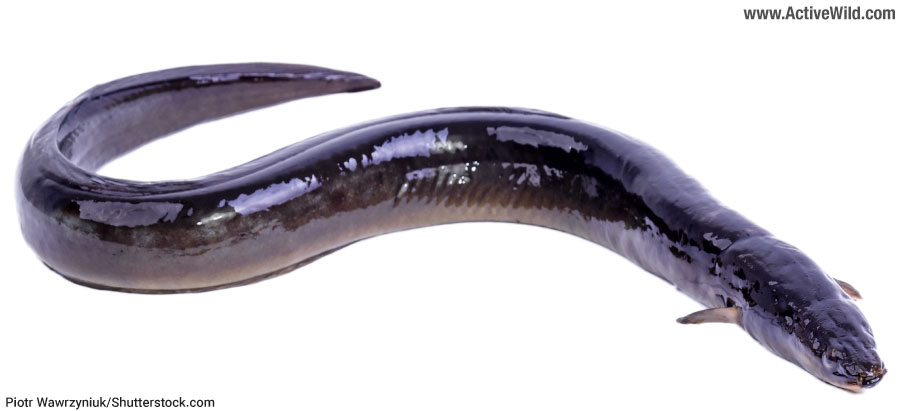
- Type of Animal: Fish
- Family: Anguillidae
- Scientific Name: Anguilla anguilla
- Conservation Status: Critically Endangered
The European eel is a fish in the freshwater eel family, Anguillidae. Like all eels, it has a long, snake-like body, and swims by moving its body in waves. Unlike most fish, eels can swim backwards.
The European eel progresses through various stages as it reaches maturity. After hatching from an egg laid in the Sargasso Sea in the North Atlantic, it drifts with the current in a larval form.
By the time it reaches Europe the eel is a translucent “glass eel”. After having entered freshwater, it becomes an “elver”, and as it gains maturity, becomes a yellow-brown colored “yellow eel”.
After spending several years in freshwater (usually up to 20 years, but the species has been recorded living over 150 years), the eel becomes a fully mature “silver eel”, its sides having turned silver. At this point it migrates back to the Sargasso sea to spawn.
The European eel’s migratory lifestyle leaves it vulnerable to a variety of threats, including pollution, habitat loss, overfishing, and the construction of barriers such as dams that prevent its passage to and from the ocean.
Sadly, this amazing and often-overlooked animal is now critically endangered.
Discover More With Active Wild
You can find out more about fish on this page: Fish - The Ultimate Guide
Discover more critically endangered animals on this page: Critically Endangered Animals
European Green Lizard

- Type of Animal: Reptile
- Family: Lacertidae
- Scientific Name: Lacerta viridis
- Conservation Status: Least Concern
The European green lizard is a large lizard found in south and southeastern Europe. The species' combined body and tail length can reach up to 40 cm. The face and throat of the male is bright blue; those of the female are pale blue / gray.
Like many lizards, the European green lizard is able to shed its tail as a means of escaping a predator. The tail will eventually grow back.
Discover More With Active Wild
You can see interesting lizards from all around the world on this page: Types of Lizards
You can find out more about reptiles on this page: Reptiles - The Ultimate Guide
European Green Woodpecker

- Type of Animal: Bird
- Family: Picidae
- Scientific Name: Picus viridis
- Conservation Status: Least Concern
Found in woodlands, meadows and farmland across much of Europe, the European green woodpecker is a relatively large woodpecker easily identified by its green plumage and loud, “laughing” call.
Like other woodpeckers, the green woodpecker lives in holes that it makes in trees with its powerful bill.
The green woodpecker forages for food on the ground, its diet consisting almost entirely of ants. It captures the insects with its barbed tongue, which is so long that it has to be wrapped around the skull when withdrawn.
Discover More With Active Wild
You can find out more about birds on this page: Birds - The Ultimate Guide
Discover different types of birds on this page: Types of Birds
European Stag Beetle
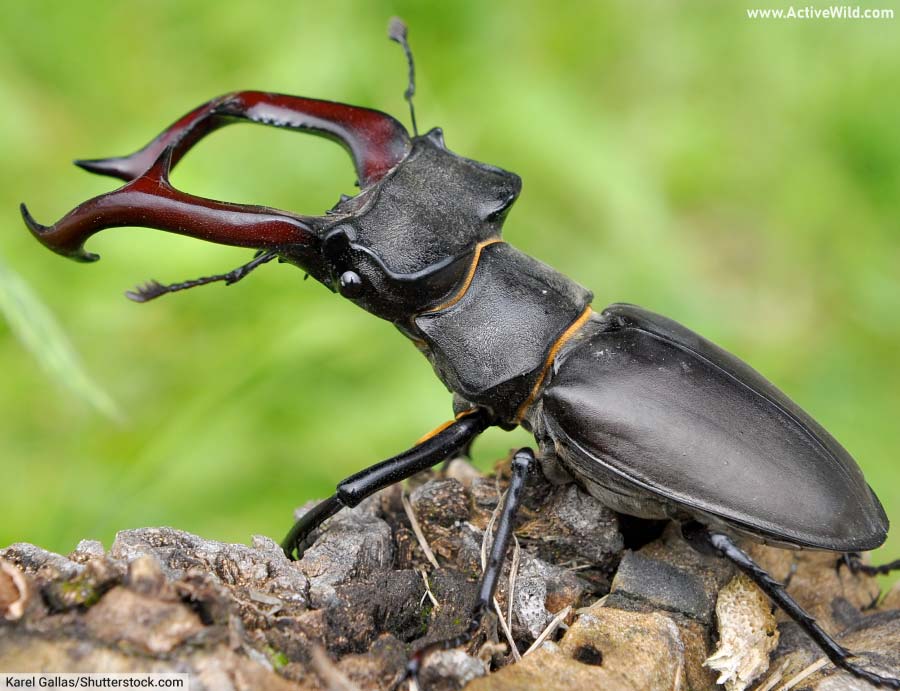
- Type of Animal: Insect
- Family: Lucanidae
- Scientific Name: Lucanus cervus
- Conservation Status: Least Concern
The European stag beetle is a large beetle named for the extended jaws of the male, which resemble a stag’s antlers. The species, which is one of around 1,200 species of stag beetle that make up the family Lucanidae, is found across much of Europe.
The stag beetle is “saproxylic”, which means that it is dependent on dead or dying trees. The species’ larvae develop in moist, rotting wood, and the beetles are most common where large, dead trees are available. In its adult form, the beetle lives for only a few weeks.
Discover More With Active Wild
You can find out more about insects on this page: Insects – The Ultimate Guide
Find out more about beetles on this page: Beetles – A Complete Guide
European Wasp

- Type of Animal: Insect
- Family: Vespidae
- Scientific Name: Vespula germanica
- Conservation Status: Unassessed
The European wasp is a species of wasp native to Europe but now introduced to the Americas and Australia. It is similar in appearance to several other wasps known as “yellowjackets” on behalf of their yellow and black striped abdomens.
Three small black marks on the face distinguish the European wasp from the closely-related common wasp, Vespula vulgaris, a species also found in Europe.
Like many other wasps, the European wasp is “eusocial”, living in colonies established by a queen and populated mainly by female workers.
Discover More With Active Wild
You can find out more about insects on this page: Insects – The Ultimate Guide
Fire Salamander
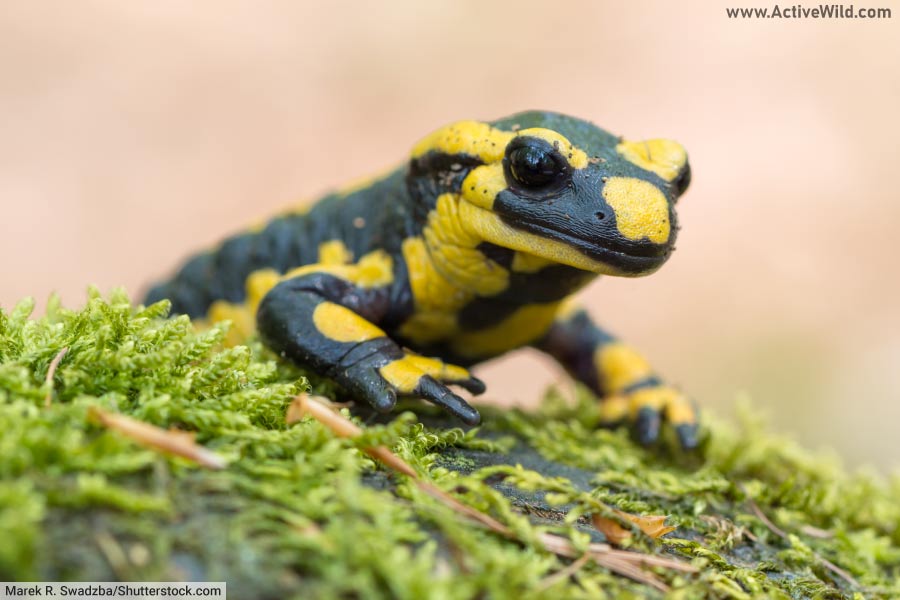
- Type of Animal: Amphibian
- Family: Salamandridae
- Scientific Name: Salamandra salamandra
- Conservation Status: Least Concern
The fire salamander is a distinctive yellow and black amphibian found throughout Southern, Central and Eastern Europe. It is most commonly found in deciduous forests, living among the leaf litter on the forest floor.
The fire salamander is one of the most common salamanders in Europe, and is also kept as a pet in many parts of the world. The species’ bright colors warm potential predators that it is poisonous.
Discover More With Active Wild
You can find out more about the fire salamander on this page: Fire Salamander Facts
You can find out more about amphibians on this page: Amphibians – The Ultimate Guide
Discover more European amphibians on this page: European Amphibians List with Pictures & Facts
Golden Eagle

- Type of Animal: Bird
- Family: Accipitridae
- Scientific Name: Aquila chrysaetos
- Conservation Status: Least Concern
The golden eagle is a large bird of prey found not just in Europe, but throughout the Northern Hemisphere. The species can be identified by its size and golden-brown plumage. Juvenile birds may also have patches of white in their tails and wings.
Golden eagles are usually found in open, mountainous areas, or by the edges of boreal forests. Their large nests are known as “eyries”, and are built on cliffs or in tall trees. Golden eagles mate for life, and their nests are “handed down” to their young.
Discover More With Active Wild
You can find out more about birds on this page: Birds - The Ultimate Guide
Discover more mountain animals on this page: Mountain Animals
Great Diving Beetle
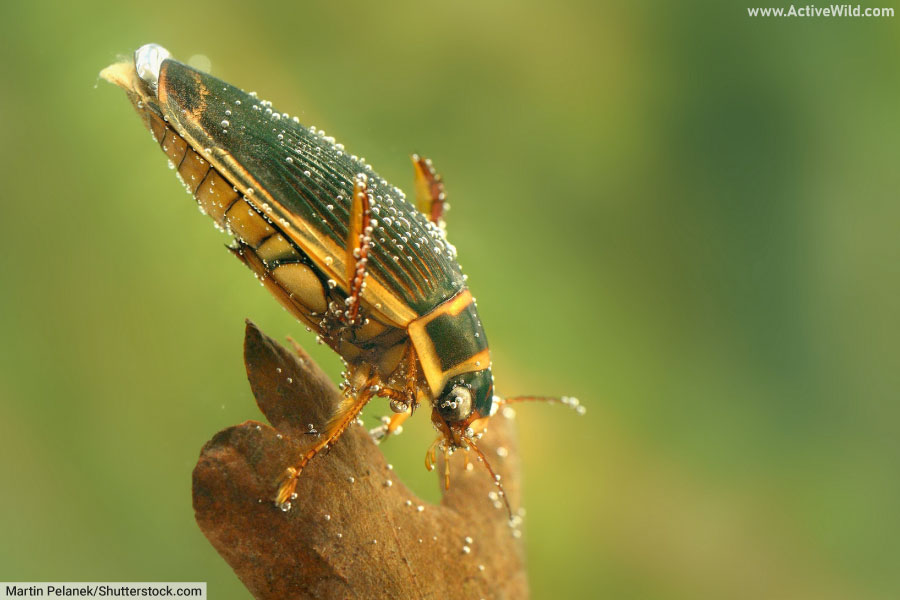
- Type of Animal: Insect
- Family: Dytiscidae
- Scientific Name: Dytiscus marginalis
- Conservation Status: Unassessed
The great diving beetle is one of the 4,638 diving beetles that make up the family Dytiscidae.
Like other diving beetles, the great diving beetle spends most of its life in the water, although adults do fly between bodies of fresh water.
This large, aquatic insect is a voracious predator, both in its larval and adult forms. Tadpoles, and even small fish, are hunted by the insect.
Adult great diving beetles store a supply of air under their wing cases, and can be seen coming to the surface to replenish this supply.
Discover More With Active Wild
You can find out more about insects on this page: Insects – The Ultimate Guide
Find out more about beetles on this page: Beetles – A Complete Guide
Discover more freshwater animals on this page: Freshwater Animals
Grey Wolf
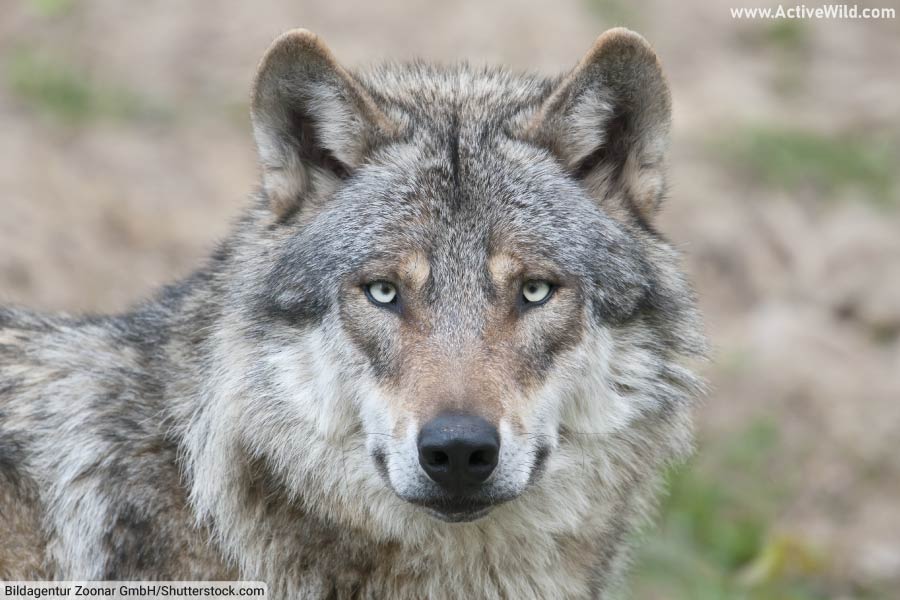
- Type of Animal: Mammal
- Family: Canidae
- Scientific Name: Canis lupus
- Conservation Status: Least Concern
The grey wolf is the largest member of the dog family, Canidae (although some domestic dog breeds are larger).
Thirty-seven subspecies ("types") of wolf are currently listed in the Mammal Species of the World database. (source)
The most common wolf subspecies in Europe (and Asia) is the Eurasian wolf, Canis lupus lupus. This large subspecies is found across a wider range than any other wolf subspecies.
A carnivore, the wolf hunts both alone and in packs. It can run at speeds of 61.2 km / 38 miles an hour in short bursts while chasing prey. It is opportunistic and will feed on carrion when given the chance.
A highly social animal, the wolf lives in a family group known as a “pack”. All members of the pack protect and care for the pups.
Discover More With Active Wild
You can find out more about wolves on this page: Wolf Facts
See every wild dog species on this page: Wild Dogs - Pictures & Facts On Every Species
Old World Swallowtail

- Type of Animal: Insect
- Family: Papilionidae
- Scientific Name: Papilio machaon
- Conservation Status: Least Concern
One of Europe’s most distinctive butterflies, the Old World swallowtail can be identified by its large size (wingspan up to 3.5 cm), distinctive markings, and the pointed "tail" on each of its hindwings.
The species is one of 554 currently-recognized insects in the swallowtail family, Papilionidae. (Source) It is the only swallowtail present in most parts of Europe; most other swallowtails are found in tropical regions. The species is also found in North America and Asia.
Discover More With Active Wild
You can find out more about insects on this page: Insects – The Ultimate Guide
Pine Marten

- Type of Animal: Mammal
- Family: Mustelidae
- Scientific Name: Martes martes
- Conservation Status: Least Concern
The pine marten (also known as the European pine marten) is a member of the weasel family, Mustelidae, found in Europe and parts of Asia. The species inhabits forests and woodlands.
Growing to a maximum size of around 80 cm (including tail), the pine marten can be identified by a “bib” of yellow-white fur on its chest under its chin. The bib of each pine marten is unique, and can be used to identify individuals.
The pine marten is a good climber and spends much of its life in the trees. A nocturnal omnivore, it eats small vertebrates, insects, eggs, honey and fruit.
Discover More With Active Wild
Discover more forest animals on this page: Forest Animals
Red Deer
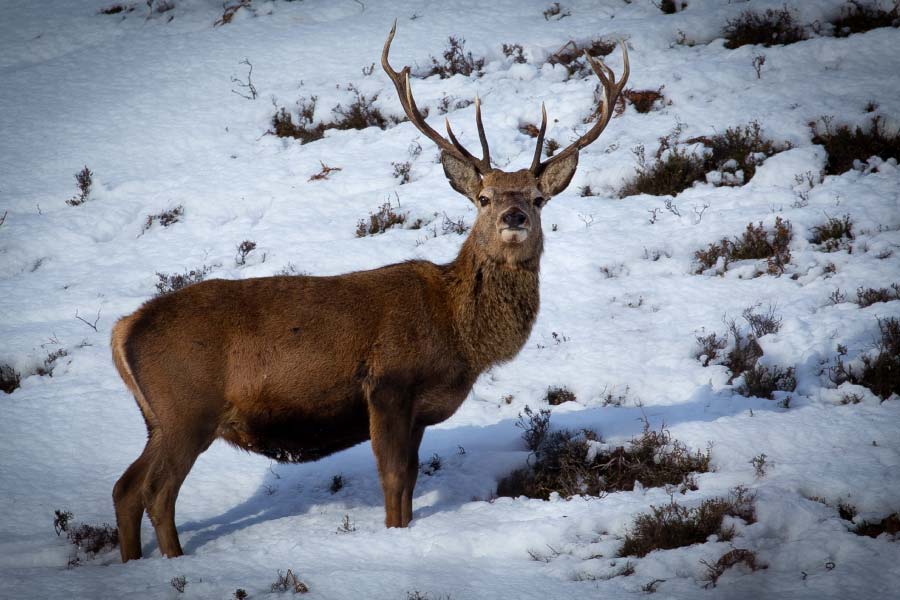
- Type of Animal: Mammal
- Family: Cervidae
- Scientific Name: Cervus elaphus
- Conservation Status: Least Concern
The red deer is a large species of deer found throughout much of Europe, and in parts of Asia and North Africa.
A large male red deer can stand 1.37 tall at the shoulders, and its antlers can weigh up to 15 kg. The species is the fourth-largest deer, after the moose, elk and sambar.
During the breeding season, which occurs in the autumn and is known as the “rut”, males use their large antlers to fight over groups of females. The antlers are shed in the winter, and begin to regrow the next spring, ready for the next rut.
Discover More With Active Wild
You can find out more about mammals on this page: Mammals - The Ultimate Guide
You can see more animals with antlers on this page: Animals With Antlers
Red Fox
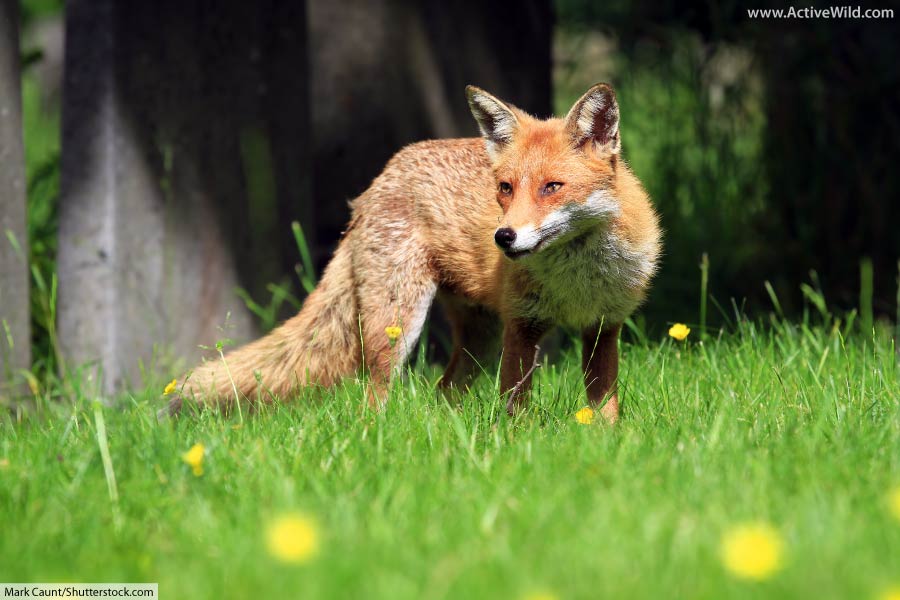
- Type of Animal: Mammal
- Family: Canidae
- Scientific Name: Vulpes vulpes
- Conservation Status: Least Concern
The red fox is one of the most widespread of all members of the dog family, being found not only throughout Europe, but also in Asia and North America. Part of the species’ success is due to its ability to live alongside humans in urban environments.
As well as being able to live in a wide range of habitats, this adaptable animal is also able to eat a wide range of food. An omnivore, it will catch its own prey (usually small vertebrates such as rodents, rabbits and birds), scavenge, and also eat plant matter such as berries, acorns and grasses.
Discover More With Active Wild
You can find out more about mammals on this page: Mammals - The Ultimate Guide
Red Kite
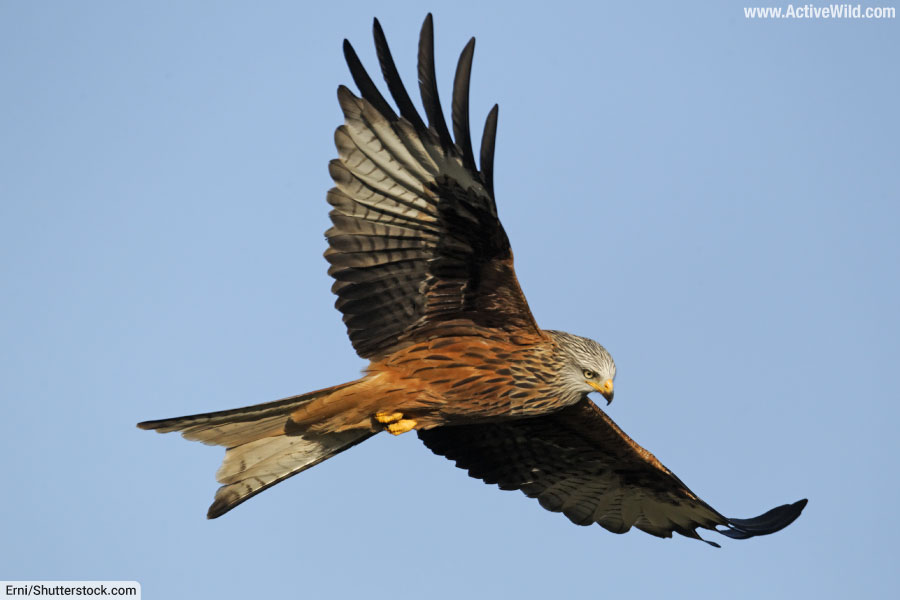
- Type of Animal: Bird
- Family: Accipitridae
- Scientific Name: Milvus milvus
- Conservation Status: Least Concern
The red kite is a large bird of prey found across much of Europe. It can be identified by its large, angled wings, red-brown color, and characteristic forked tail. It can often be seen soaring over woodland and farmland.
Once persecuted almost to extinction in the UK, the red kite has been successfully reintroduced to Great Britain, and is now a common sight in many areas.
The red kite is primarily a scavenger, performing a natural “clean-up” role by feeding on animal carcasses.
The species is closely related to the black kite, which is found in Europe, Africa and Australia.
Discover More With Active Wild
You can find out more about birds on this page: Birds - The Ultimate Guide
Red Squirrel

- Type of Animal: Mammal
- Family: Sciuridae
- Scientific Name: Sciurus vulgaris
- Conservation Status: Least Concern
The red squirrel is a member of the squirrel family, Sciuridae, found across much of Europe and northern Asia. The species can be identified by its red/brown color and ear tufts.
The red squirrel is a member of a subgroup of the squirrel family known as “tree squirrels”, on behalf of their arboreal (tree-dwelling) lifestyle. Other types of squirrels include the land-dwelling ground squirrels, marmots and chipmunks.
Although common in mainland Europe, the red squirrel has all but disappeared from England and Wales following the introduction of the eastern grey squirrel from North America. Today, the red squirrel is only found in significant numbers in the British Isles in Ireland and Scotland.
Discover More With Active Wild
You can find out more about mammals on this page: Mammals - The Ultimate Guide
Roe Deer

- Type of Animal: Mammal
- Family: Cervidae
- Scientific Name: Capreolus capreolus
- Conservation Status: Least Concern
The roe deer is a small deer found throughout Europe and parts of western Asia. It inhabits forests, woodlands and farmlands, and can even be found in some urban habitats.
The roe deer can be identified by its small size, reddish grey coat, lack of a tail, and white rump, which is displayed when the deer is threatened.
Like all deer, the roe deer is herbivorous. It feeds on buds, leaves, grasses, and other plant matter.
Discover More With Active Wild
You can find out more about mammals on this page: Mammals - The Ultimate Guide
You can see more animals with antlers on this page: Animals With Antlers
Slow Worm
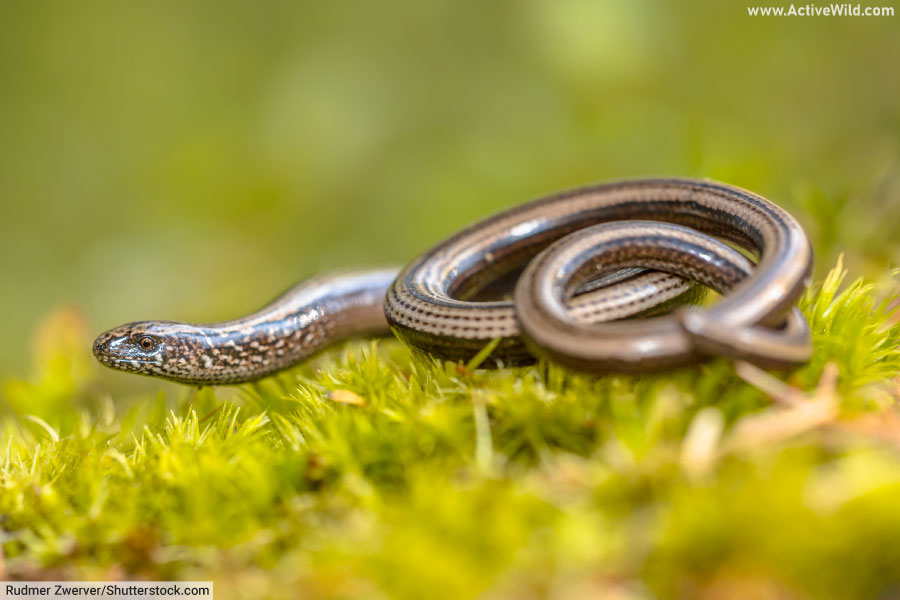
- Type of Animal: Reptile
- Family: Anguidae
- Scientific Name: Anguis fragilis
- Conservation Status: Least Concern
Despite being called a “worm”, and having a snake-like, limbless body, the slow worm is actually a lizard.
The species is one of several “legless lizards” that lack limbs and move in a snake-like manner.
Like many lizards, the slow worm can shed its tail to avoid predation and, unlike a snake, it can blink.
The slow worm is found in heathlands, woodland edges and hedgerows. It is also present in urban gardens (especially in compost heaps), although it can fall victim to domestic cats.
The slow worm hibernates from October to March. The species is ovoviviparous: the eggs develop and hatch inside the female, who gives birth to live young.
The slow-worm is one of the longest-living reptiles. The species has been known to live at least 54 years in captivity, and can live for up to 30 years in the wild.
Discover More With Active Wild
You can find out more about reptiles on this page: Reptiles - The Ultimate Guide
Smooth Newt
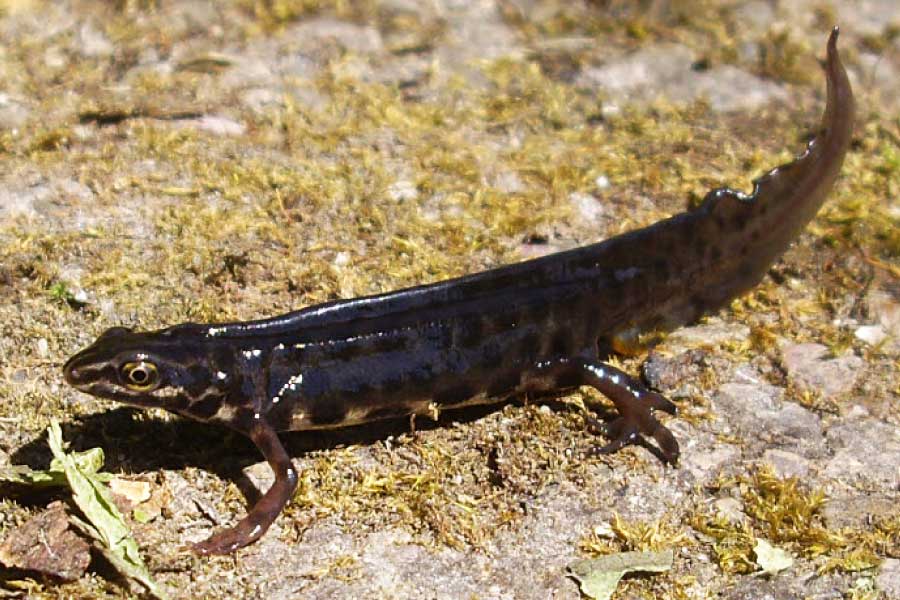
- Type of Animal: Amphibian
- Family: Salamandridae
- Scientific Name: Lissotriton vulgaris
- Conservation Status: Least Concern
The smooth newt is the third most common amphibian in Europe, and is widespread across much of the continent.
Brown / olive in color, the smooth newt grows to around 10 cm. The species gets its name from the smoothness of its skin.
The smooth newt breeds in ponds and lakes in the spring and summer, and hibernates during the winter.
Discover More With Active Wild
You can find out more about amphibians on this page: Amphibians – The Ultimate Guide
Discover more European amphibians on this page: European Amphibians List with Pictures & Facts
Viviparous Lizard / Common Lizard
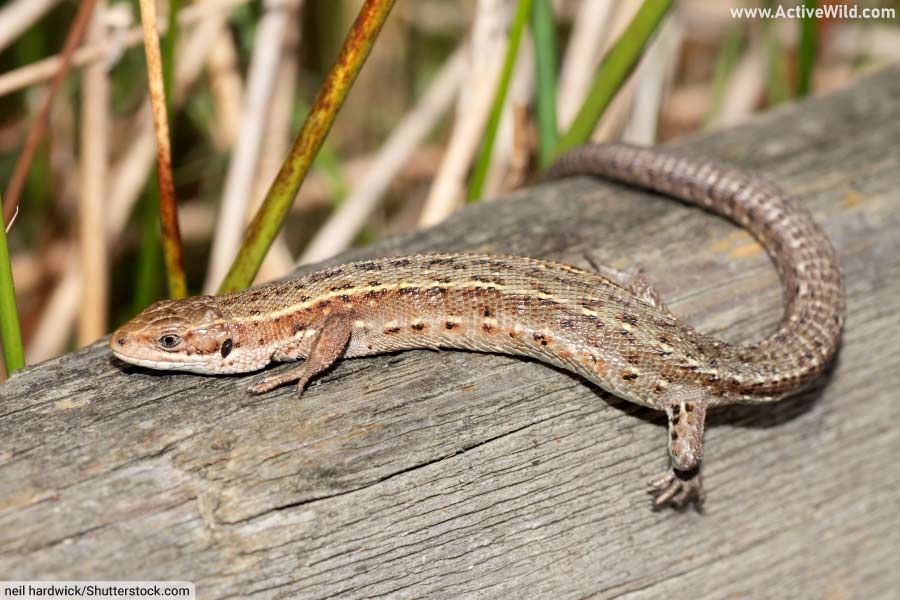
- Type of Animal: Reptile
- Family: Lacertidae
- Scientific Name: Zootoca vivipara
- Conservation Status: Least Concern
With a range stretching from Spain to Japan, the viviparous lizard is found across a wider area – and further north – than any other lizard. The species is the only reptile native to Ireland.
The viviparous lizard is also known as the common lizard. It has a maximum length of 7 cm / 2.76 in., and is typically brown in color with darker and lighter spots and stripes, although several other color variations are known.
The viviparous lizard is among the relatively small number of lizards that give birth to live young, rather than laying eggs. The species’ name reflects this method of reproduction (viviparity = live birth).
Discover More With Active Wild
You can find out more about reptiles on this page: Reptiles - The Ultimate Guide
Discover more reptiles on this page: Examples of Reptiles
Water Vole
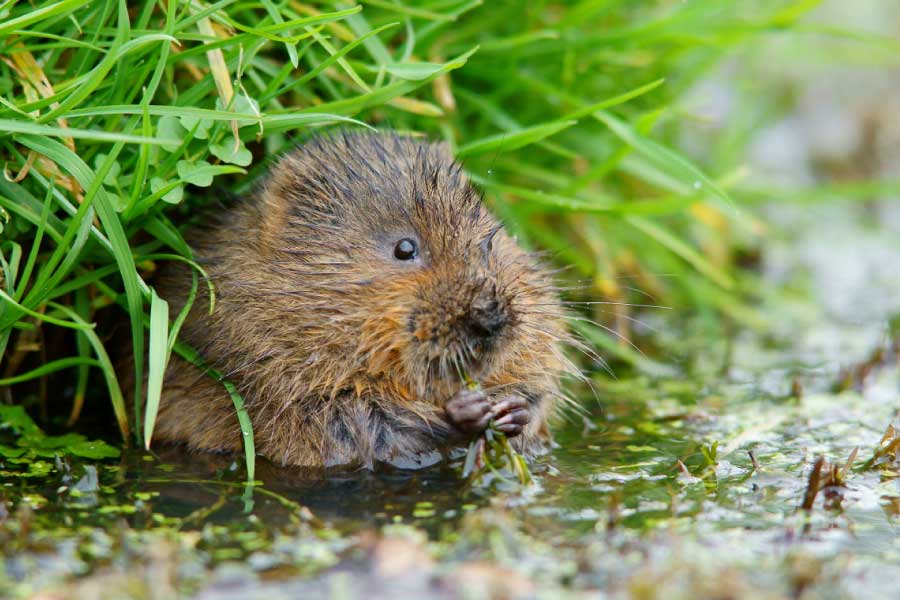
- Type of Animal: Mammal
- Family: Cricetidae
- Scientific Name: Arvicola amphibius
- Conservation Status: Least Concern
The water vole is also known as the “European water vole” to distinguish it from other rodents known as “water voles” (including the American water vole).
This European rodent belongs to the family Cricetidae, which, with 608 recognized species, is the second-largest mammal family. (Other members of this family include hamsters, lemmings, and New World rats and mice.)
The water vole is between 14 and 22 cm in length, and has a rat-like appearance (the species is also known as a “water rat”), although its nose is blunter than that of a brown rat, and its fur is chestnut-brown, rather than grey-brown, in color.
Although the water vole has a global conservation status of “Least Concern”, its population in the UK has shrunk by up to 95% since the 1960’s.
Discover More With Active Wild
You can find out more about mammals on this page: Mammals - The Ultimate Guide
Discover more freshwater animals on this page: Freshwater Animals
Wild Boar
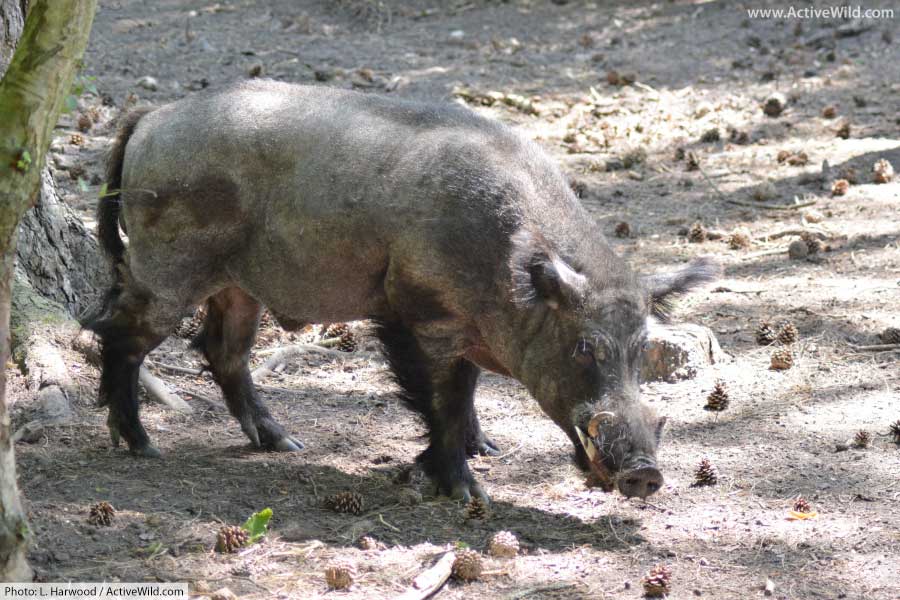
- Type of Animal: Mammal
- Family: Suidae
- Scientific Name: Sus scrofa
- Conservation Status: Least Concern
The wild boar is a species of wild pig belonging to the pig family, Suidae. It is found across much of Europe and Asia, and its range extends southwards into northern Africa.
Primarily a forest animal, the wild boar is also found in habitats as varied as grasslands and semi-deserts, although it prefers habitats with some tree cover.
The boar’s large head makes up one-third its total body length, which can reach up to 1.5 m / 4.92 ft. Males are significantly larger and heavier than females. The canine teeth of the male protrude from the mouth, forming short tusks.
Male boars are typically solitary, while females live in small groups known as “sounders”.
Discover More With Active Wild
You can find out more about mammals on this page: Mammals - The Ultimate Guide
Discover more forest animals on this page: Forest Animals


